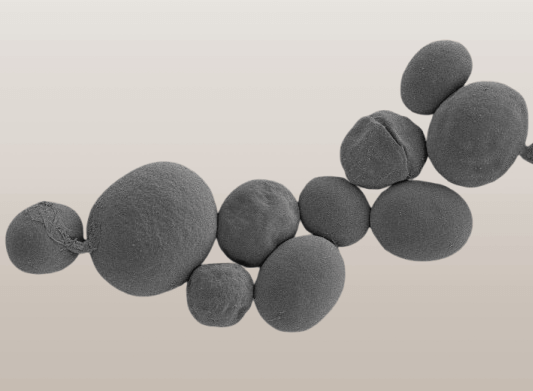The Dean of the Faculty of Biology awarded authors of the most cited articles

05 03 2025
For the second time, distinctions have been awarded for authorship of the most frequently cited works. This year, original publications with the leading contribution of researchers from the Faculty of Biology published in 2018 and 2019 were considered.
Among the three award-winning publications, two were prepared in the Department of Medical Microbiology, headed by dr hab. Tomasz Jagielski.
- Jagielski, T., Bakuła, Z., Gawor, J., Maciszewski, K., Dyląg, M., Nowakowska, J., Gromadka, R., Karnkowska, A. The genus Prototheca (Trebouxiophyceae, Chlorophyta) revisited: implications from molecular taxonomic studies. Algal Res., 2019, 43:e101639.
In this study, the taxonomy of the colourless algae of the genus Prototheca was comprehensively revised, based on a newly designed molecular marker – the mitochondrial cytb gene, encoding apocytochrome b, a component of the bc1 complex in the respiratory chain. Overall, 14 distinct species were confirmed within the Prototheca genus. A detailed description of six new Prototheca species was provided. A proposal of a diagnostic key for the identification of all 14 species was also given. The classification system for the Prototheca algae, presented in this paper, along with the genotyping assay, are currently the ‘gold standard’ for the identification of these microorganisms.
- Jagielski, T., Roeske, K., Bakuła, Z., Piech, T., Wlazło, Ł., Bochniarz, M., Woch, P., Krukowski, H. A survey on the incidence of Prototheca mastitis in dairy herds in Lublin province, Poland. J. Dairy Sci., 2019, 102(1), 619-628.
This work is one of the two largest studies on the prevalence of mastitis due to Prototheca spp. in dairy cows in Poland. The results of the study were essential for assessing the epidemiology of Prototheca infections in Polish dairy herds. Overall, the prevalence of Prototheca mastitis infections was calculated at 5%. Prototheca spp. proved to be the third, after streptococci and staphylococci, most common agents of mastitis in cattle. Most of the Prototheca mastitis cases were shown to be subclinical infections, with a significantly elevated, compared to control animals, Somatic Cell Counts, with imperceptible differences in peripheral blood morphology. The predominant aetiological agent of Prototheca mastitis is P. bovis. The species also predominated in samples from different anatomical sites of both sick and healthy cows, as well as in environmental samples. The occurrence of mastitis on farms with no environmental contamination with Prototheca was explained by a latent phase of infection in the host and/or intermittent shedding of the pathogen in milk; whereas outbreaks of Prototheca mastitis, in a similar environmental context, spoke in favor of cow-to-cow transmission.
The third prize-winning article was prepared in the Department of Plant Biochemistry, headed by dr hab. Anne Szakiel, prof. ucz.
- Alsoufi A. S. M., Pączkowski C., Szakiel A., Długosz M. Effect of jasmonic acid and chitosan on triterpenoid production in Calendula officinalis hairy root cultures. Phytochemistry Letters 2019, 31: 5-1.
The study demonstrated that the use of certain substances inducing defence response in plants (so-called elicitors) in plant in vitro cultures can lead to a significant increase in the production of bioactive substances, such as specialized metabolites, with potential applications in the pharmaceutical or cosmetic industries. However, such stimulation of specialized metabolic pathways often occurs at the expense of basic metabolism, which can cause temporary weakening of the plant growth.
The experiments had been carried out with the use of stable lines of hairy root cultures, obtained for the first time for marigold (Calendula officinalis) by Dr. Długosz, as a result of transformation with the bacterium Rhizobium rhizogenes. Hairy root cultures represent a particularly attractive research model used in plant biotechnology. The highest genetic stability among all known types of in vitro cultures, manifested by a constant level of metabolite synthesis, combined with the ability to grow in liquid media, offers significant advantages with high potential for technical and industrial applications.
The researchers found that the presence of jasmonic acid (one of the natural regulators of plant growth and development) led to more than a 100-fold increase in the production and accumulation of triterpenoid saponins, responsible for the medicinal properties of marigold. However, this was accompanied by a reduction in sterol biosynthesis, essential components of cell membranes. Another elicitor, chitosan (a chitin derivative used in agriculture as a plant growth stimulator), increased the biosynthesis of sterols, but did not stimulate triterpenoid biosynthesis. The published results indicated that elicitors used in in vitro cultures can modify the biosynthesis pathways of plant metabolites in various ways, sometimes leading to their competitiveness. This has significant implications for biotechnological attempts to stimulate the productivity of in vitro cultures as well as for the induction of natural plant immunity in organic farming.
Photo.Prototheca bovis, SEM, x6,000.